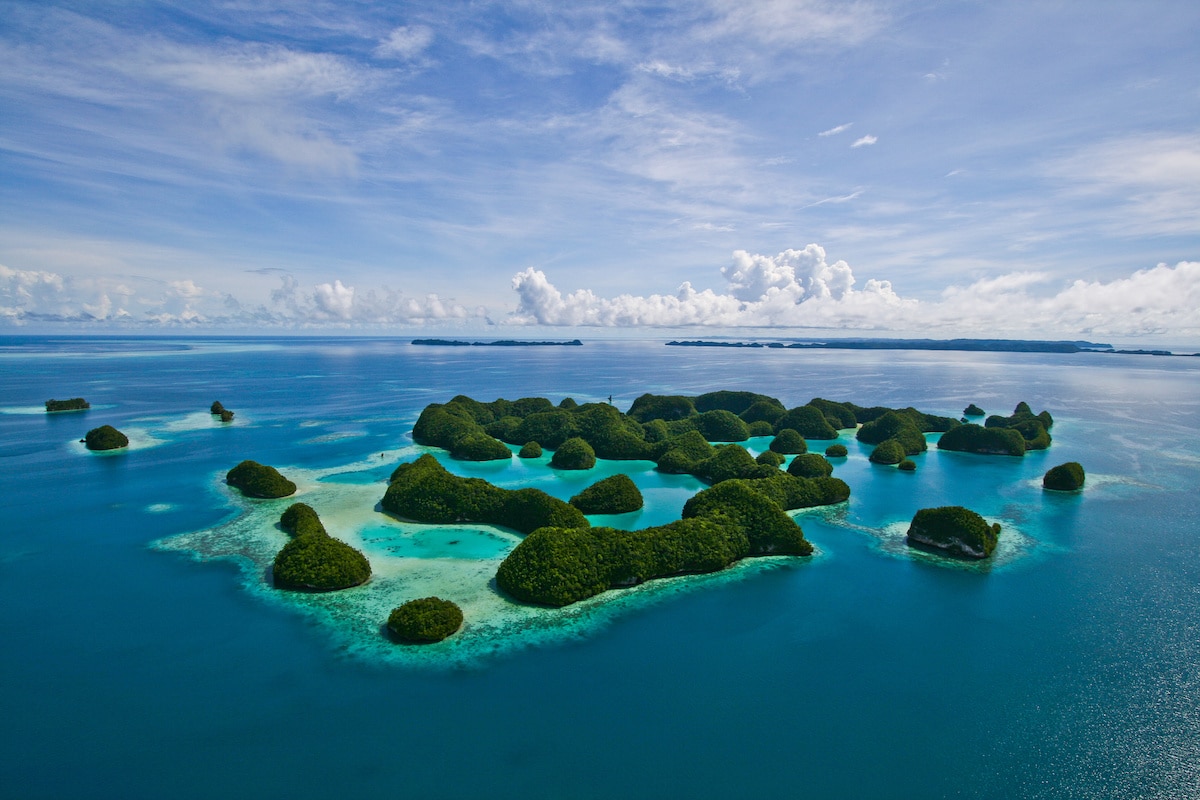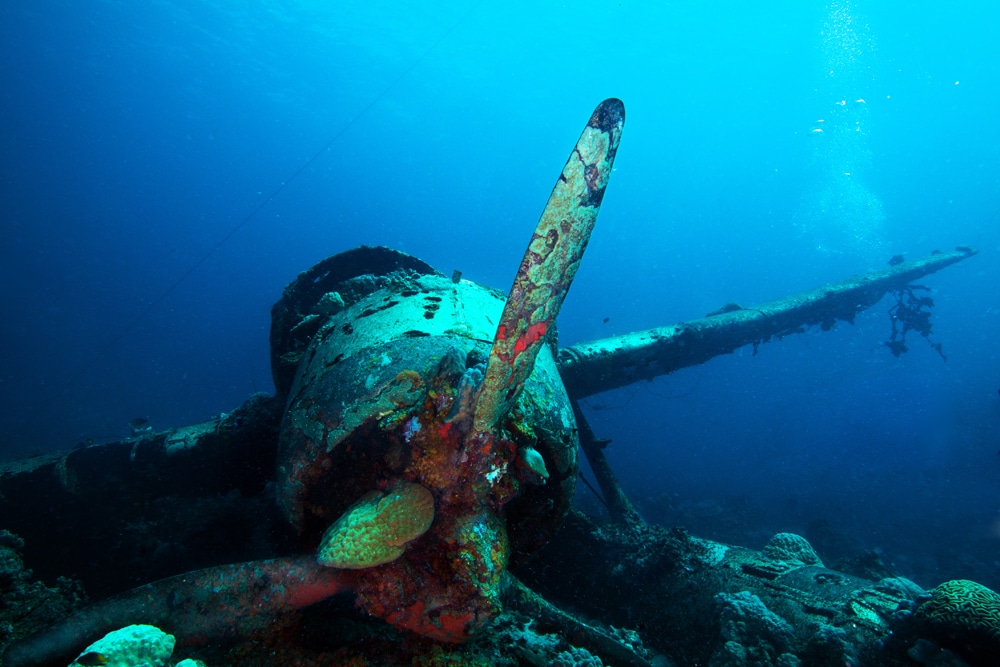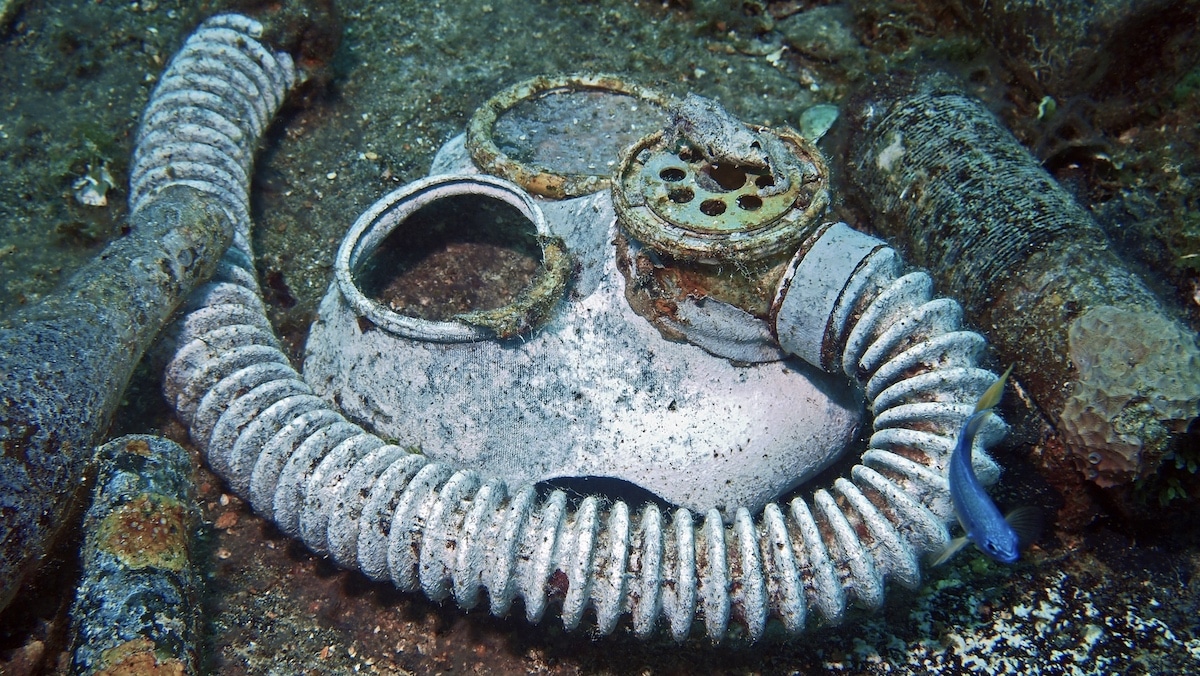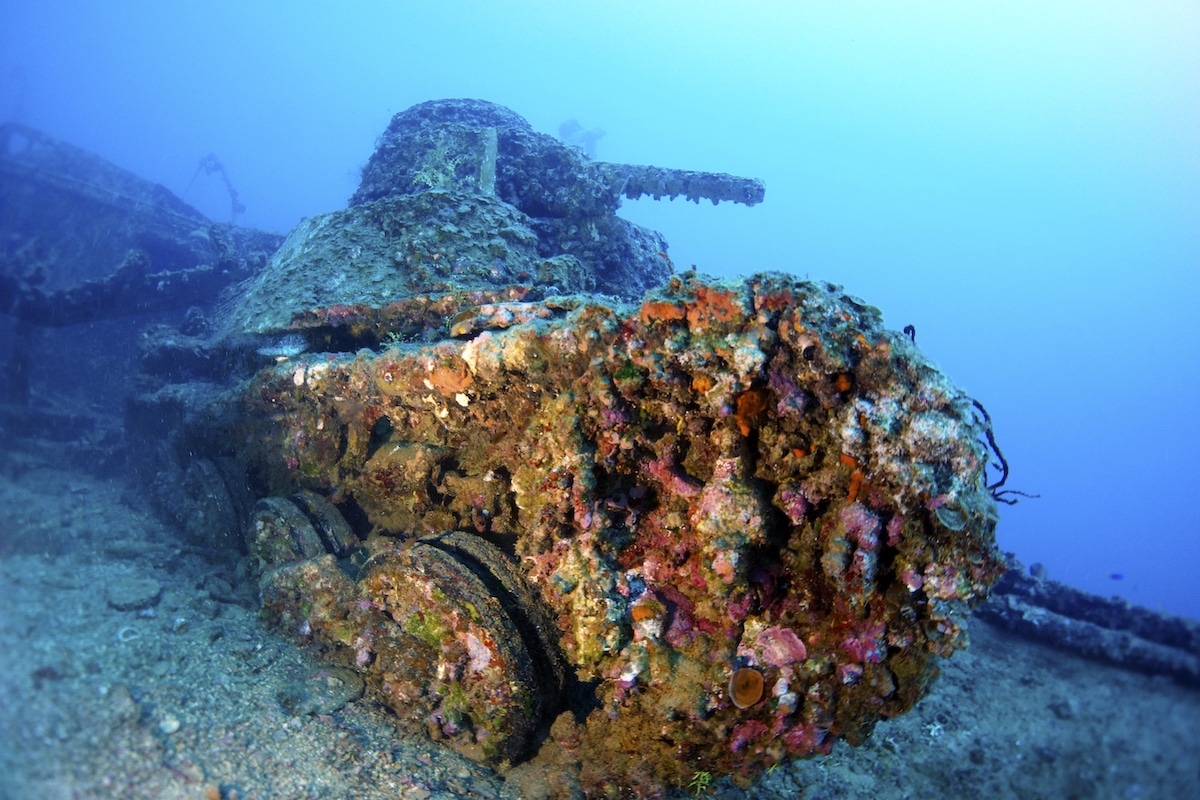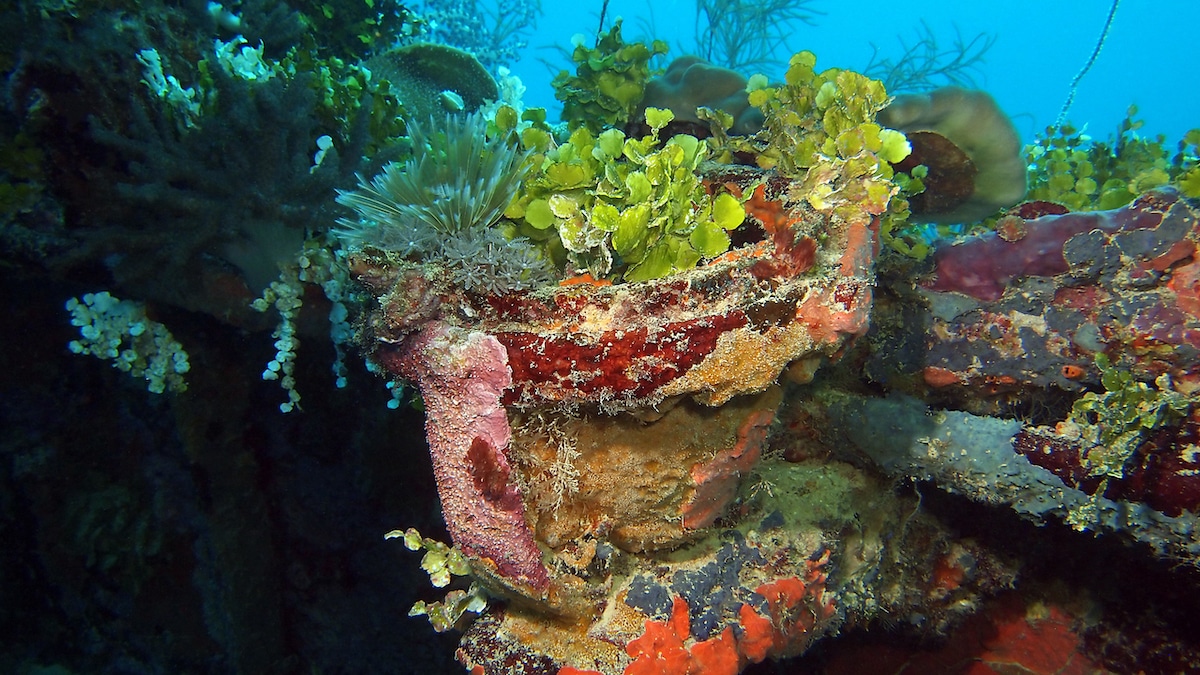News
Unmissable Micronesia Wrecks
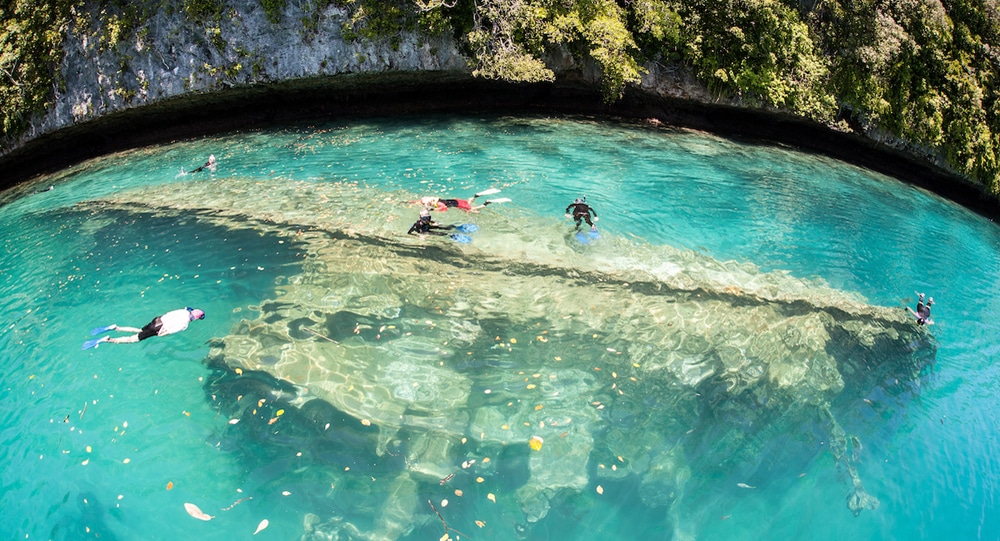
Micronesia scuba diving has everything a diver could wish for; from thriving reefs to coral-encrusted WWII wrecks, plenty of large marine life and tiny colourful critters. Palau and Truk Lagoon are the places to go if you’re a fan of wreck diving, with numerous wrecks on offer.
There are a variety of liveaboards to choose from at both destinations. The beautiful Palau Siren is an understandably popular choice with its luxurious accommodation. The SS Thorfinn is great for technical divers and has two special technical diving packages; the Rebreather Plan and Truk Tek Unlimited.
Truk lagoon can be dived all year, thanks to its sheltered nature, and Palau has three main diving seasons:
- The high season from December to March, offering flat seas and dry weather
- The shoulder months of April, July, August, October and November, when there is more wind and rainfall
- The low months of May, June and September which offer fewer visitors and the lowest prices
Here is our pick of the top Micronesia wrecks to explore:
PALAU
Palau is one of Micronesia’s main dive destinations and there is something for all interests; with reef dives, drop-offs, drift dives, caves and multiple wrecks to explore. It is best to visit Palau as an advanced diver, with drift and wreck diving experience, to make the most of the dive sites.
IRO MARU
What is it?
This Japanese Navy oiler sank in 1944 and is 143 meters long, with the deck at 25 meters below the surface.
Why dive this wreck?
The Iro Maru is an impressive sight, still sitting upright and giving a complete view of the ship. The deck is covered with clams, oysters and critters and the ship is home to plentiful corals, including black coral trees. There are numerous fish and an array of WWII artifacts, including some live ammunition – so be sure not to touch anything on the wreck. There are two large guns; one on the stern and the other on the bow.
Who is this wreck suitable for?
The Iro Maru sits in an area with no currents, making it easily accessible, and it is within recreational dive limits. Wreck penetration is possible at this wreck.
AMATSU MARU
What is it?
This oil tanker came into service just 4 months before being sunk. She is the largest shipwreck in Palau, with a total length of 159 meters.
Why dive this wreck?
This huge shipwreck is also known as the Black Coral Wreck, as the hull is covered in black coral trees. This unique sight is great for photography. The interior still has electrical and radio equipment and you can see damage on the stern from the explosions that sunk it.
Who is this wreck suitable for?
The Amatsu Maru lies at 40 meters depth, with the deck at 30 meters, and is best suited to advanced divers. Wreck penetration is possible.
JAKE SEAPLANE
What is it?
The Jake Seaplane is one of the most well-known wrecks and was only discovered in 1994, by a fisherman who spotted it from the surface. It is a WWII Navy Seaplane and is 11 meters long.
Why dive this wreck?
The Jake Seaplane sits upright on a coral head and is mostly intact. The wreck is covered in corals, and there are plenty of coral species to spot on the wreck and in the surrounding area.
Who is this wreck suitable for?
Sitting upright at around 15 meters depth, the Jake Seaplane is easily accessible and suitable for less experienced divers.
TRUK
Truk Lagoon is known for having more than 48 wreck diving sites and waters up to 100 meters deep. It is one of the best places for wreck diving and offers great opportunities for recreational and technical diving amongst World War II wrecks.
FUJIKAWA MARU
What is it?
This cargo and passenger ship had been sent to Truk lagoon for repairs in 1944 when it was caught up in Operation Hailstone and sunk after being hit by a torpedo. It is one of the most popular wreck dives in the area and she is 133 meters long.
Why dive this wreck?
This is another impressive wreck, with the boat sitting upright, and the outside of the wreck covered in corals and sponges. There is a large bow gun and two fighter aircrafts, and the engine room and tool rooms are a must. You can find many artefacts on this wreck, including artillery. Keep your eyes open for large schools of jacks and barracuda, plus grey reef sharks, whilst you dive there.
Who is this wreck suitable for?
The depth range of 5 to 35 meters, with the deck at 18 meters, makes the Fujikawa Maru ideal for all dive experience levels.
SANKISAN MARU
What is it?
This 112-meter Japanese army cargo ship was strafed, leading to a fire and explosions that ripped the ship apart. There is a huge 152-meter diameter crater with large metal sections lying around.
Why dive this wreck?
This is a great open wreck where you can see holds filled with machine gun and rifle shells, plus truck frames, aircraft engines and propellers. The aft is missing but the stern sits upright 100 meters away from the rest of the ship. The mast rising to the surface is covered in corals and there is also plenty of coral cover on the deck. It offers some of the best soft coral cover in the lagoon.
Who is this wreck suitable for?
The average depth is 24 meters, with a maximum depth of 27 meters, making this wreck suitable for advanced divers.
SAN FRANCISCO MARU
What is it?
This passenger cargo ship is Truk’s most famous deep dive, lying at a depth of around 63 meters.
Why dive this wreck?
The San Francisco Maru contains mines, bombs, tanks and trucks. She is a popular choice in the 40 to 60-meter (131 to 196 feet) depth range and the four cargo holds contain aircraft bombs, artillery shells, tanker trucks, a flatbed truck, and torpedo warheads.
Who is this wreck suitable for?
This wreck is a favourite among technical divers.
SHINKOKU MARU
What is it?
The Shinkoku Maru is around 152 meters long and was originally built as an oil tanker, later converted to a fleet oiler. She survived two days of attacks and two aerial torpedo strikes, until finally sinking.
Why dive this wreck?
This wreck is fantastic for night diving and has plentiful soft corals and hydroids that emerge after dark. This is one of the most colourful wrecks in Truk and truly comes alive at night. You can see into the engine room from the bridge and the galley still holds many utensils on the stove. The medical bay and huge engines are not to be missed.
Who is this wreck suitable for?
The depth range of 10 to 38 meters makes this wreck suitable for a variety of dive experience levels.
This article was written by divers and writers at LiveAboard.com
Photo Credits: SS Thorfinn Liveaboard
 Discover liveaboard diving holiday solutions around the world at Liveaboard.com.
Discover liveaboard diving holiday solutions around the world at Liveaboard.com.
Gear News
Scubapro Free Octopus Promotion 2024

Free Octopus with every purchase of a SCUBAPRO regulator system
Just in time for the spring season, divers can save money with the FREE OCTOPUS SPRING PROMOTION! Until July 31st SCUBAPRO offers an Octopus for free
with every purchase of a regulator system!
Get a free S270 OCTOPUS with purchase of these combinations:
MK25 EVO or MK19 EVO with A700
MK25 EVO or MK19 EVO with S620Ti
MK25 EVO or MK19 EVO with D420
MK25 EVO Din mit S620Ti-X
Get a free R105 OCTOPUS with purchase of the following combinations:
MK25 EVO or MK19 EVO with G260
MK25 EVO or MK17 EVO with S600
SCUBAPRO offers a 30-year first owner warranty on all regulators, with a revision period of two years or 100 dives. All SCUBAPRO regulators are of course certified according to the new European test standard EN250-2014.
Available at participating SCUBAPRO dealers. Promotion may not be available in all regions. Find an authorized SCUBAPRO Dealer at scubapro.com.
More information available on www.scubapro.com.
Blogs
Northern Red Sea Reefs and Wrecks Trip Report, Part 3: The Mighty Thistlegorm

Jake Davies boards Ghazala Explorer for an unforgettable Red Sea diving experience…
Overnight, the wind picked up, making the planned morning dive a bit bumpy on the Zodiacs to the drop point on Thomas Reef. There, we would dive along the reef before descending through the canyon and then passing under the arch before ascending the wall with a gentle drift. The site provided great encounters with more pelagic species, including shoals of large barracuda, tuna, and bigeye trevally.
Once back on the boat, it was time to get everything tied down again as we would head back south. This time, with the wind behind us, heading to Ras Mohammed to dive Jackfish Alley for another great gentle drift wall dive before then heading up the coast towards the Gulf of Suez to moor up at the wreck of the Thistlegorm. This being the highlight wreck dive of the trip and for many onboard, including myself, it was the first time diving this iconic wreck. I had heard so much about the wreck from friends, and globally, this is a must on any diver’s list. Fortunately for us, there was only one other boat at the site, which was a rarity. A great briefing was delivered by Ahmed, who provided a detailed background about the wreck’s history along with all the required safety information as the currents and visibility at the site can be variable.

Kitting up, there was a lot of excitement on deck before entering the water and heading down the shoreline. Descending to the wreck, there was a light northerly current which reduced the visibility, making it feel more like the conditions that can be found off the Welsh coast. At 10m from the bottom, the outline of the wreck appeared as we reached the area of the wreck which had been bombed, as our mooring line was attached to part of the propeller shaft. Arriving on deck, instantly everywhere you looked there were many of the supplies which the ship was carrying, including Bren Carrier tanks and projectiles that instantly stood out.

We headed around the exterior, taking a look at the large propeller and guns mounted on deck before entering the wreck on the port side to take a look in the holds. It was incredible to see all the trucks, Norton 16H, and BSA motorcycles still perfectly stacked within, providing a real snapshot in time.

Overall, we had four dives on the Thistlegorm, where for all of the dives we were the only group in the water, and at times, there were just three of us on the whole wreck, which made it even more special, especially knowing that most days the wreck has hundreds of divers. Along with the history of the wreck, there was plenty of marine life on the wreck and around, from big green turtles to batfish, along with shoals of mackerel being hunted by trevally. Some unforgettable dives.

The final leg of the trip saw us cross back over the Suez Canal to the Gobal Islands where we planned to stay the night and do three dives at the Dolphin House for the potential of sharing the dive with dolphins. The site, which included a channel that was teeming with reef fish, especially large numbers of goatfish that swam in large shoals along the edge of the reef. These were nice relaxing dives to end the week. Unfortunately, the dolphins didn’t show up, which was okay as like all marine life they are difficult to predict and you can’t guarantee what’s going to be seen. With the last dive complete, we headed back to port for the final night where it was time to clean all the kit and pack before the departure flight the next day.

The whole week from start to finish on Ghazala Explorer was amazing; the boat had all the facilities you need for a comfortable week aboard. The crew were always there to help throughout the day and the chefs providing top quality food which was required after every dive. The itinerary providing some of the best diving with a nice mixture of wreck and reef dives. I would recommend the trip to anyone, whether it’s your first Red Sea liveaboard in the Red Sea or you’re revisiting. Hopefully, it’s not too long before I head back to explore more of the Red Sea onboard Ghazala Explorer.

To find out more about the Northern Red Sea reef and wrecks itineraries aboard Ghazala Explorer, or to book, contact Scuba Travel now:
Email: dive@scubatravel.com
Tel: +44 (0)1483 411590
Photos: Jake Davies / Avalon.Red
-

 News3 months ago
News3 months agoHone your underwater photography skills with Alphamarine Photography at Red Sea Diving Safari in March
-

 News3 months ago
News3 months agoCapturing Critters in Lembeh Underwater Photography Workshop 2024: Event Roundup
-

 Marine Life & Conservation Blogs2 months ago
Marine Life & Conservation Blogs2 months agoCreature Feature: Swell Sharks
-

 Blogs2 months ago
Blogs2 months agoMurex Resorts: Passport to Paradise!
-

 Blogs2 months ago
Blogs2 months agoDiver Discovering Whale Skeletons Beneath Ice Judged World’s Best Underwater Photograph
-

 Marine Life & Conservation2 months ago
Marine Life & Conservation2 months agoSave the Manatee Club launches brand new webcams at Silver Springs State Park, Florida
-

 Gear Reviews3 months ago
Gear Reviews3 months agoGear Review: Oceanic+ Dive Housing for iPhone
-

 Gear Reviews2 weeks ago
Gear Reviews2 weeks agoGEAR REVIEW – Revolutionising Diving Comfort: The Sharkskin T2 Chillproof Suit


